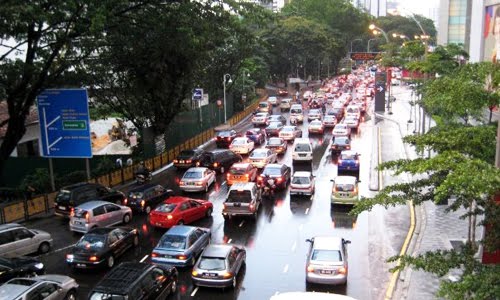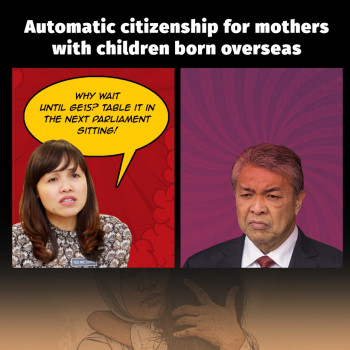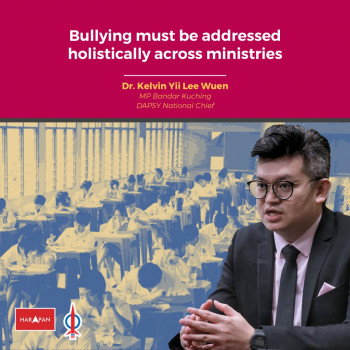By Liew Chin Tong, MP for Kluang
 It seems that the Government, the banks, the housing developers and the middle class are all in love with the automobile culture. The problem is, the ubiquitous existence of motorcycles and world’s highest per capita road deaths are clear signs of public policy failure.
It seems that the Government, the banks, the housing developers and the middle class are all in love with the automobile culture. The problem is, the ubiquitous existence of motorcycles and world’s highest per capita road deaths are clear signs of public policy failure.
A case which happened when I was first elected as Member of Parliament for Bukit Bendera in 2008 continues to remind me of the human cost and psychological pain of road deaths.
I was seated between two families at my service centre in an attempt to bring some emotional closure: one lost a motorcyclist son to a road accident, the other one came with a son whose car accidentally killed the former’s son. The three-hour session was emotionally wrenching. I have since visited many other motorcycle accident victims who have been left dead or injured.
As of 31st December 2013, there were 11.03 million registered motorcycles and 10.48 million private cars. If commercial vehicles were included, Malaysia has a total of 23.71 million registered vehicles.
Malaysia’s private car ownership level exceeds that of wealthier Western European countries and is approaching the level of United States, Australia and Canada, huge countries with a much longer history of car culture.
Traffic congestion in Malaysia is no longer confined to capital cities. Even small towns like Kluang – of which I am now the elected representative – are often congested as the number of private cars grow exponentially. Last year, a total number of 655,793 new cars were registered, of which 576,657 were privately owned with the balance commercially owned.
Nationally, there was an increase of 35 percent of registered vehicles between 2007 and 2012. In the same 5-year period, registered vehicles in Wilayah Persekutuan Kuala Lumpur increased by 42 percent. At the same time, the presence of the even larger number of registered motorcycles indicates that the car culture in Malaysia is not serving the transport needs of the poorer segment of the nation.
According to World Health Organisation’s Road Safety Report 2013, Malaysia has the highest deaths on the road per 100,000 populations in the world. (India – 18.9; Russia – 18.6; China – 20.5; Malaysia – 25). Motorcyclists made up 60% of deaths on the road.
There is a love affair with cars in the minds of policy makers and a car-related industry-complex.
The Malaysian Government subsidises fuel and funds the construction of roads and highways but public transport is supposed to be “user-paid”. The government cannot yet fathom the idea that public transport should be funded by the public sector.
Until very recently, public transport licenses are treated as a policy tool to implement the New Economic Policy but often become a hotbed for cronyism.
Since Dr. Mahathir Mohamad came into power in 1981, the Government has been a “car dealer par excellence”. There is a National Automotive Policy but there isn’t a National Public Transport Policy. With the number of cars that the National Automotive Policy wishes to produce annually (1 million units), all roads will just become parking spaces as cars won’t be able to move much.
“Demand management” is never in the lexicon; it is all about supply of roads and highway capacity which sees the construction lobby thrive on building one highway after another to feed the automobile culture.
When public transport is mooted, the vendors capture it very quickly to turn it into massive construction contracts such as the Klang Valley MRT. No one seriously look at buses as an option.
A banking sector is ever eager to provide loans for automotive purchases (deemed “safe”, “conservative”, “good” asset-based lending), which I will deal with in a separate article.
A developer lobby, many of them owned by government-linked corporations (GLCs) and government-linked investment corporations (GLICs), is too eager to sprawl the cities with green field development that can only exist with cheap fuels, highways, and an automobile culture.
No one looks at buses as a serious option because of the love affairs with cars and also it doesn’t provide the construction lobby as much money as the big toys like MRT and LRT, which alone won’t solve public transport demands without a proper bus feeder system.
It’s time for us to think beyond the car culture and also to move beyond the construction lobby when it comes to public transport construction. But to dismantle the car-related industry-complex needs political will – which is sorely lacking at this moment.



